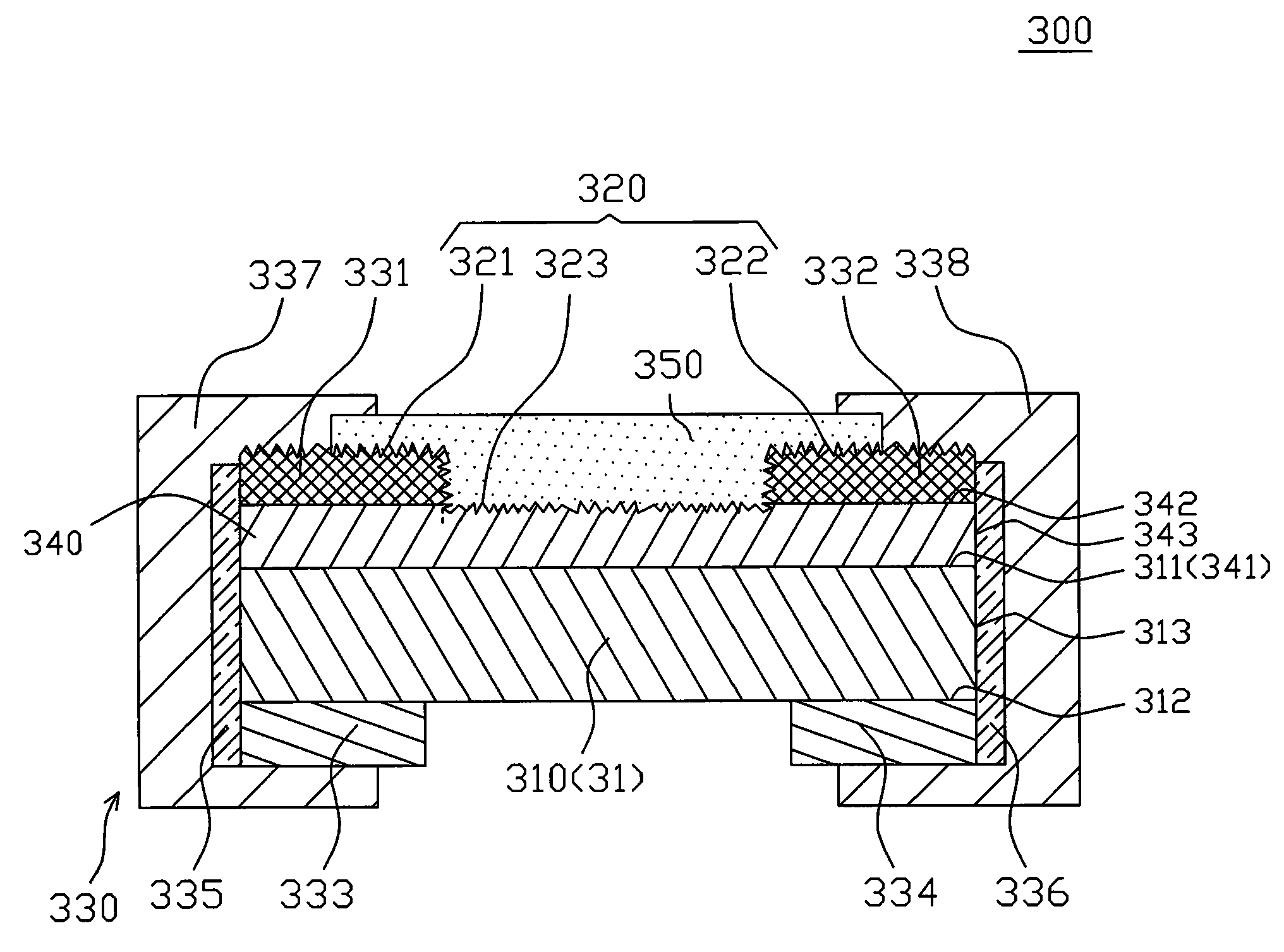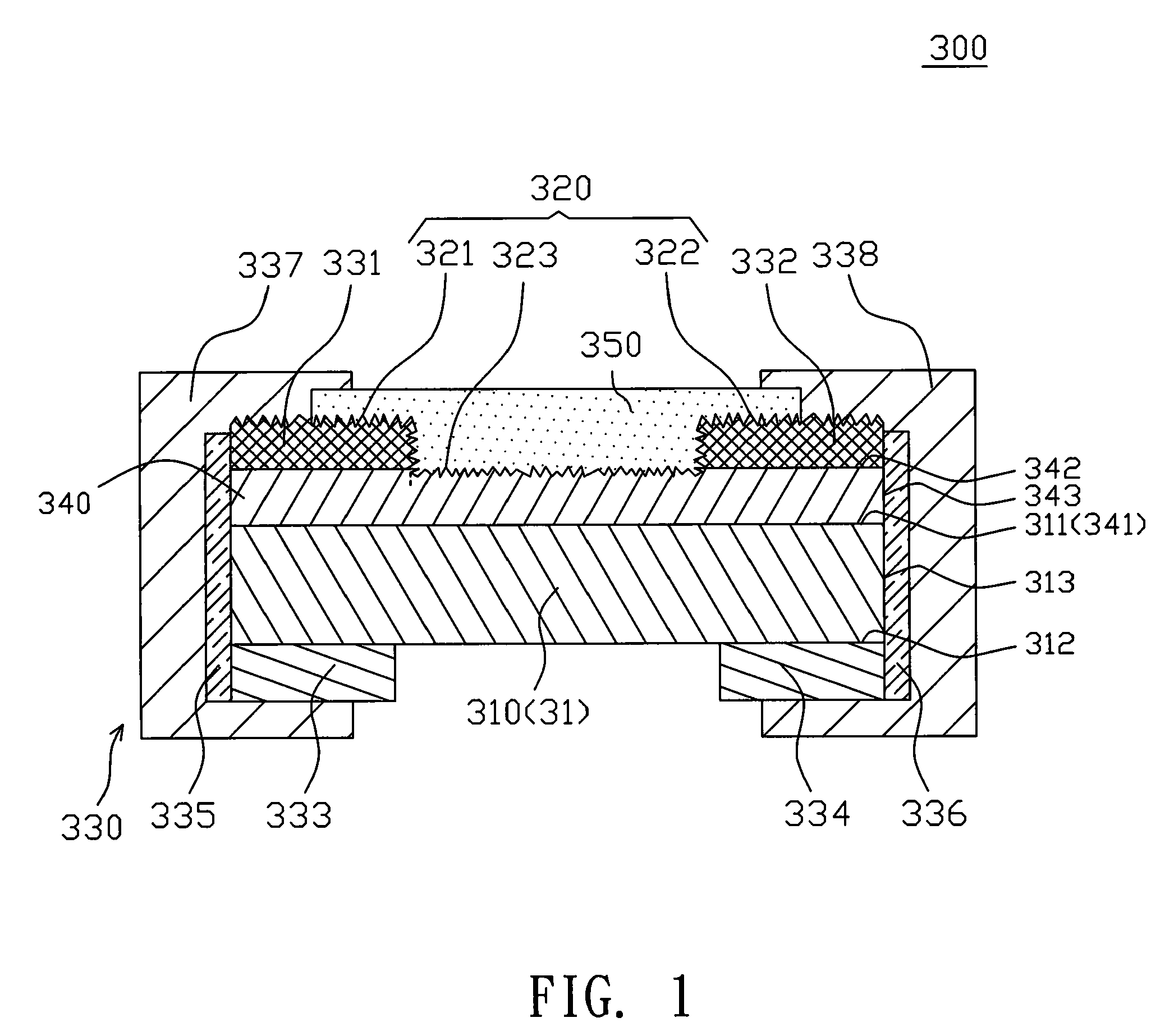Resistive component and method of manufacturing the same
a technology of resistive components and components, applied in the field of resistive components, can solve the problems of high manufacturing cost, inability to control the tcr of the resistive layer easily, and increase the manufacturing process, so as to improve the adhesion between the resistive layer and the protective layer, simplify manufacturing processes, and increase the stability of the resistive componen
- Summary
- Abstract
- Description
- Claims
- Application Information
AI Technical Summary
Benefits of technology
Problems solved by technology
Method used
Image
Examples
Embodiment Construction
[0015]The above mentioned and other technical contents, characteristics, and effects of the invention can be illustrated more clearly by the following detailed descriptions together with the corresponding figures. The wording describing directions used in the following descriptions, such as: up, down, left, right, front, back or the like, indicates the directions with respect to the figure only. Therefore, the wording used to describe directions is for illustration but not to limit the scope of the invention.
[0016]FIG. 1 shows a cross sectional view of a resistive component 300 according to one embodiment of the invention. The resistive component 300 is suitable for detecting electric current in a circuit and has a low resistance value and a low temperature coefficient of resistance (TCR). Preferably, its resistance value is lower than about 10 mΩ and its TCR is lower than about 100×10−6 / K (ppm / K).
[0017]The resistive component 300 comprises a carrier 31, a resistive layer 340, an el...
PUM
| Property | Measurement | Unit |
|---|---|---|
| thickness | aaaaa | aaaaa |
| thickness | aaaaa | aaaaa |
| thickness | aaaaa | aaaaa |
Abstract
Description
Claims
Application Information
 Login to View More
Login to View More - R&D
- Intellectual Property
- Life Sciences
- Materials
- Tech Scout
- Unparalleled Data Quality
- Higher Quality Content
- 60% Fewer Hallucinations
Browse by: Latest US Patents, China's latest patents, Technical Efficacy Thesaurus, Application Domain, Technology Topic, Popular Technical Reports.
© 2025 PatSnap. All rights reserved.Legal|Privacy policy|Modern Slavery Act Transparency Statement|Sitemap|About US| Contact US: help@patsnap.com



